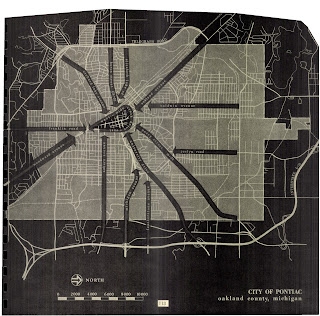July 05, 2015 8:00 a.m.
As walkable urbanism grows, more investment is necessary
Christopher Coes (left) is managing director of Locus: Responsible Real Estate Developers and Investors, a program of Smart Growth America.
Chris Leinberger is the Charles Bendit Distinguished Scholar and Research Professor at the George Washington University School of Business and chair of its center for Real Estate and Urban Analysis.
Chris Leinberger is the Charles Bendit Distinguished Scholar and Research Professor at the George Washington University School of Business and chair of its center for Real Estate and Urban Analysis.
Across the country, metro areas like Washington, D.C., and Boston have been experiencing significant shifts toward walkable urbanism, particularly in this most recent real estate cycle, making these areas among the most walkable nationwide. Research released last month at Locus Developers' Michigan Leadership Summit tells us that metro Detroit — and Michigan overall — are beginning to see a similar trend, though not as advanced.
It would have been unthinkable 15 years ago that Detroit would be shifting toward walkable urban development, it having long followed the drivable suburban model. Not surprisingly, this drivable suburban development was propelled by the industry — car and truck manufacturing — that made Michigan one of the wealthiest regions in the world during the 20th century. However, we are seeing the pendulum moving back.
It's clear that Michigan metro areas are in favor of walkable urban places, or what the report calls "WalkUPs." The Detroit-Ann Arbor area is a clear leader in this shift.
For rental apartment and for-sale residential, the price premiums associated with WalkUPs are even greater. Multifamily rental apartments in WalkUPs achieve rents per square foot approximately 28 percent higher than in drivable suburban areas. For-sale residential prices are 57 percent higher in WalkUPs than in drivable subdivision locations.
Finally, more and more income property development — which includes office, retail, hotel, rental apartments and for-sale residential — is concentrating in WalkUPs. Although WalkUPs and walkable neighborhoods make up only 3 percent of the metro region's land, they have accounted for 25 percent of income property development in the latest cycle, up from only 6 percent from 1992 to 2000.
Downtown and Midtown Detroit got an enormous shot in the arm in 2010 when Quicken Loans announced that it was moving its headquarters downtown. Other large companies and residential development and retail began to follow.
It is no coincidence that these moves have been accompanied by major announcements of public-private partnerships and more than $2 billion of further investment in new construction and development over the past three to four years. And the new M-1 Rail is under construction, which will result in even more development, increased tax base and jobs.
While the trend toward more walkable development is evident, Detroit-Ann Arbor still has a long way to go, having just 30 established WalkUPs, only six in the city of Detroit and many quite embryonic. Boston and D.C. have double that amount. Downtown Detroit presents the greatest opportunity.
Realizing Detroit's potential in walkable urbanism will require continued investment in infrastructure, especially the development of a true regional rapid transit system along the rest of Woodward Avenue into Oakland County and on the region's other major transit corridors. Overlay zoning at these WalkUPs and walkable neighborhoods to allow for high-density, mixed-use development is crucial.
With investments in infrastructure, the shift to walkable urbanism presents an opportunity for real estate developers, investors and residents to promote economic development while achieving environmental sustainability.
Walkable urban places can and should be mixed-income as well. The research has shown that the combination of housing and transportation costs on the typical metro Detroit household budget is about 8 percent lower in a walkable place than in a drivable suburban location due to lower transportation costs.
A growing body of evidence shows that college-educated people under the age of 35 prefer walkable urban places. Attracting and retaining these educated young professionals is critical for economic development in Michigan.
Yes, a "walkable Detroit" is a new chapter in the Motor City's history, but the landscape is changing. These walkable areas are critical to making this area competitive for the future and an even greater place to live, work and play.



No comments:
Post a Comment